| From 1775 - 2-2015 43,360,492+ American Veterans Served 1,354,664+ American Veterans Died 1,498,237+ American Veterans Wounded From 1917 - 2-2015 40,071+ American Veterans Are Still MISSING! |
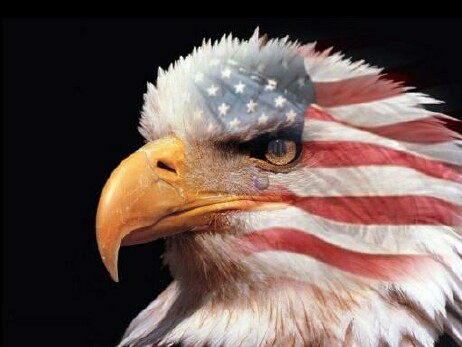 |
United States military casualties of war Wikipedia®
We have information about these Trask American War Veterans during these listed wars. Numorous Heros are listed below. Note: some Federal Records are held for 70 years. |
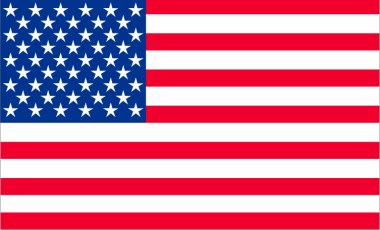 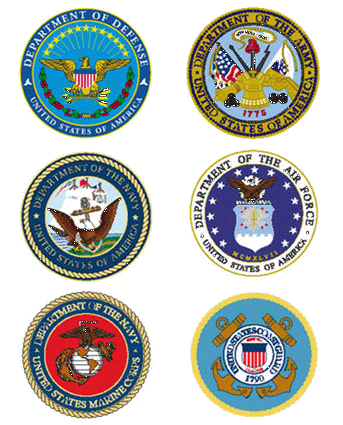 |
The American Revolution
From the Vally Forge Muster Rolls of The Continental Army Database
David Trask, Private, 9th MA Reg. 4th MA Brigade MA03931 John Trask, Bombardier 3rd Artillery Brigade MA12940 Nathaniel Trask, Lieutenant 9th MA Reg. 4TH MA Brigade MA03933 Samuel Trask, Private 8th MA Reg. 4th MA Brigade MA19547
Soldiers Who Fought in the Revolutionary War from Brimfield, Hampden County, Mssachusetts
Trask, Benjamin of Brimfield Trask, Noah of Brimfield Trask, William of Brimfield
Massachusetts Soldiers and Sailors in the War of the Revolution
Trask, Adin. Marine, sloop "Providence," commanded by Capt. John Paul Jones Trask, Barnabas, Beverly. Private, Lieut. Peter Shaw's co., which marched probably on the alarm of April 19, 1775 Trask, Bartholomew, Beverly. Private, Capt. Caleb Dodge's co., which marched on the alarm at Lexington and Concord April 19 and 20, 1775 Trask, Benjamin, Brimfield. Private, Capt. James Sherman's co., Col. Pyncheon's regt., which marched on the alarm of April 19, 1775 Trask, Benjamin, Salem.Boy, ship "Rhodes," commanded by Capt. Nehemiah Buffinton Trask, Benjamin. Private, Capt. Benjamin Ward, Jr.'s co Trask, Benjamin. Capt. Jonathan Procter's co., Trask, Charles, Salem. Sailor, ship "Rhodes," commanded by Capt. Nehemiah Buffinton Trask, Daniel, Bellingham. Private, Capt. Samuel Cowell's co Trask, Daniel, Monson (also given Brimfield). Private, Capt. Isaac Colton's co Trask, David, Woburn (also given Marlborough). Private, Capt. Joshua Walker's co., marched on the alarm of April 19, 1775 Trask, David. Private, Capt. Abijah Burbank's co., ., which marched on the alarm of April 19, 1775 Trask, Ebenezer, Beverly. Private, Capt. Caleb Dodge's co., which marched on the alarm at Lexington and Concord April 19 and 20, 1775 Trask, Ebenezer. Private, Capt. William Pearson's (3d) co Trask, Ebenezer. Private, Capt. Joseph Keith's co Trask, Ebenezer.Private, Capt. Nathan Packard's co., Trask, Ebenezer. Private, Capt. Timothy Heald's co., Trask, Ebenezer, Jr., Beverly. Private, Lieut. Peter Shaw's co., which marched on the alarm of April 19, 1775 Trask, Elias, New Salem. Private, Capt. Samuel Taylor's co., Trask, Ezra, Danvers. Private, Capt. Caleb Low's (Danvers) co., which marched on the alarm of April 19, 1775 Trask, Ezra. Private, Capt. Stephen Webster's co., Trask, Freeborn. Private, Capt. Joseph Rea's co.; Trask, George, Capt. Addison Richardson's co., Trask, Isaac.Private, Capt. Aaron Charles's co., Trask, Israel, Beverly. Capt. John Low's co., Trask, Israel, Beverly. Private, Capt. Jeremiah Putnam's co., Trask, Israel, Beverly. Descriptive list of officers and men on board the brigantine "Active" Trask, Israel. Capt. Asa Prince's co., Trask, Israel. Sergeant, Col. Gideon Burt's (1st Hampshire Co.) regt Trask, James.Private, Lieut. John Trask's co., Trask, James.Private, Capt. Ebenezer Goodale's co., Trask, Jesse. Private, Lieut. John Trask's co., Trask, Jesse. Private, Capt. Samuel Merriman's (2d) co., Trask, Job. Corporal, Capt. William Hooper's co. Trask, Job. Armorer, brigantine "Massachusetts," commanded by Capt. John Lambert Trask, John, Beverly, Col. Putnam's regt Trask, John, Beverly, marched to camp July 19, 1780, under command of Capt. Clark Trask, John, Bridgewater. Matross, Capt. Daniel Lothrop's co. Trask, John, Concord. Capt. Charles Miles's co. Trask, John, New Salem.Capt. John King's (9th) co Trask, John, New Salem.Private, Capt. Samuel Taylor's co., Trask, John (Jr.), New Salem. 2d Lieutenant, Capt. Jeremiah Bullard's 10th (2d New Salem) co., 6th Hampshire Co. Trask, John New Salem, Capt. D. Shays's co., Col. Putnam's regt Trask, John, Princeton, Capt. Allen's co., Col. Wigglesworth's regt Trask, John, Sudbury, Capt. Nathaniel Cudworth's co, , marched on the alarm of April 19, 1775 Trask, John, Sudbury, Capt. Thaddeus Russell's co., Trask, John, Natick, Capt. Joseph Morse's co., Trask, John.Private, Lieut. John Trask's co., Col. David Leonard's regt Trask, John.Private, Capt. Henry Hunter's co., Col. Jones's regt Trask, John.Private, Capt. Joseph Keith's co., Col. Cotton's regt Trask, John.Private, Capt. Moses Harvey's co., Col. Woodbridge's regt Trask, John, Woburn. Descriptive list of men raised from 3d Middlesex Co. regt Trask, John .Descriptive list of men raised in Hampshire Co Trask, Jonathan, Danvers.Private, Capt. Caleb Low's (Danvers) co., , marched on the alarm of April 19, 1775 Trask, Jonathan, Gloucester.2d Lieutenant, Capt. Gideon Parker's co., Trask, Jonathan, Woburn.Private, Capt. Hugh Maxwell's co., Trask, Jonathan, Woburn, Capt. Pettengill's co., Col. Wesson's regt.; Trask, Joseph, Cambridge. Sergeant, Capt. Benjamin Lock's co., Trask, Joseph, Edgecomb. Capt. Israel Davis's co., Col. Wigglesworth's regt. Trask, Joseph, Reading.list of officers and crew of the ship "Jack" (privateer), commanded by Capt. Nathan Brown, Trask, Joseph. commissioned as commander of the schooner "Resolution" Trask, Joshua. Boy, sloop [brigantine] "Tyrannicide," commanded by Capt. John Fisk Trask, Joshua. Private, Capt. David Goodwin's co., Col. Cogswell's regt. Trask, "Latier," [Retire] Beverly. Trask, Moses, Beverly (also given Cape Ann). Capt. John Low's co., Col. John Mansfield's regt Trask, Moses.2d Lieutenant, Capt. Gideon Parker's co., Col. Moses Little's regt Trask, Moses. Corporal, Capt. Joseph Jones's detachment of militia Trask, Moses. Private, Capt. Archibald McAllister's co., Col. Samuel McCobb's regt Trask, Moses.Corporal, Capt. McAllster's co., Lieut. Col. Joseph Prime's regt Trask, Nathaniel, Beverly. Private, Capt. Moses Brown's co. Trask, Nathaniel, Beverly. Sailor, brigantine "Fanny," commanded by Capt. Herbert Woodberry Trask, Nathaniel, Woburn.Private, Capt. Joshua Walker's co., Col. David Greene's (2d Middlesex Co.) regt; marched on the alarm of April 19, 1775 Trask, Noah. Private, Capt. Aaron Charles's co., Lieut. Col. Timothy Robinson's detachment of Hampshire Co. militia Trask, Osman, Beverly.Private, Capt. Jeremiah Putnam's co., Col. Nathan Tyler's regt Trask, Peter, Monson (also given Brimfield). Private, Capt. Isaac Colton's co., Col. David Brewer's (9th) regt Trask, Philip. Boy, brigantine "Massachusetts," commanded by Capt. Daniel Souther Trask, Philip. commissioned as commander of the schooner "Success" Trask, Retire, Beverly. Private, Capt. John Gay's co., Col. Ebenezer Francis's regt Trask, Retire, Beverly. Capt. Jonathan Procter's co., Col. Jacob Gerrish's regt Trask, Richard. Boy, brigantine "Massachusetts," commanded by Capt. John Lambert Trask, Rufus. Private, Capt. Aaron Charles's co., Lient. Col. Timothy Robinson's detachment of Hampshire Co. militia Trask, Samson, Monson. Corporal, Capt. Ames Walbridge's co., Col. David Brewer's (9th) regt Trask, Samuel, Bradford. Return of working tools in Capt. Cogswell's co., Col. Gerrish's regt Trask, Samuel, Edgecomb. Private, Capt. Israel Davis's co., Col. Joseph Frye's regt Trask, Samuel.Private, Capt. John Hall, Jr.'s (1st) co., Col. Palmer's regt Trask, Samuel. Sergeant, Capt. Andrew Elliott's co., Col. Jonathan Holman's regt, , marched on the alarm of April 19, 1775 Trask, Samuel.Capt. Miles Greenwood's co., Col. Jacob Gerrish's regt Trask, Thomas, Sudbury. Capt. Joseph Smith's (Sudbury) co., Col. James Barrett's regt, , marched on the alarm of April 19, 1775 Trask, Thomas.Private, Capt. Ichabod Bonney's co., Col. Nathan Sparhawk's regt Trask, Thomas. Private, Capt. Joseph Jones's detachment of militia Trask, Thomas. Private, Capt. Archibald McAllister's co., Col. Samuel McCobb's regt Trask, William, Beverly.Private, Capt. Larkin Thorndike's (1st Beverly) co., which marched on the alarm of April 19, 1775 Trask, William, Brimfield. Private, Capt. James Sherman's co., Col. Pyncheon's regt, , marched on the alarm of April 19, 1775 Trask, William ( Jr.), Templeton, Capt. Wilder's co., Col. Grout's regt Trask, William.Corporal, Capt. Ebenezer Goodale's co., Trask, William.Private, Capt. Josiah Wilder's co., Col. Nathan Sparhawk's regt Trask, William.Private, Maj. Nathaniel Heath's co.; Trask, William, 2d, Beverly. Private, Lieut. Peter Shaw's co., which marched on the alarm of April 19, 1775
Alphabetical List of Officers of the Continental Army "T" Fifteenth Virginia page 547
Trask, Jonathan (Mass)
2d Lieutenant of Little's Massachusetts Regiment, April to December, 1775; 2d Lieutenant 27th Continental Infantry, 1st January, to 31st December, 1776
Trask, Moses (Mass)
2d Lieutenant of Little's Massachusetts Regiment, 19th May to December, 1775.
Trask, Nathaniel (Mass)
Private in Lexington Alarm, April, 1775; Private and Corporal in Gerrish's Massachusetts Regiment, April to December, 1775; Sergeant, 26th Continental Infantry, 1st January to 31st December, 1776; 2d Lieutenant 9th Massachusetts, 1st January, 1777; resigned 12th July, 1779.
War of 1812 Muster Rolls
Trask Abiezer Capt. Duston's Co., MA Mil. Private Trask Abiezer 2 Reg't (Thomas') MA Mil. Private Trask Alvin 1 Battalion, Artillery (Chandler's), MA Militia. Private Trask Benjamin II 3 Reg't (Dodge's) MA Militia. Private Trask Calvin F. Capt. Winslow's Co., NY Militia. Private Trask Daniel 1 Reg't (Cutter's) MA Militia. Private Trask Daniel 2 Reg't (Osgood's) MA Militia. Private Trask David 1 Reg't (Cutter's) MA Militia. Private Trask David Jr. 2 Reg't (Day's) MA Militia. Private Trask David 4 Reg't (Comings') MA Mil. Private Trask Dummer Mccrate's Batt'n, Cav., MA Mil. Private Trask Ebenezer Sherwin's Reg't MA Militia. Corporal Trask Ebenezer Jr. 1 Reg't (Sherwin's) MA Militia. Corporal Trask Ebenezer 3 Reg't (Dodge's) MA Militia. Musician Trask Edward Col. Mccobb's Reg't U.S. Volunteers. Private Trask Edward 3 Reg't (Dodge's) MA Militia. Private Trask Enoch 1 Reg't (Cutter's) MA Militia. Private Trask Enoch 1 Reg't (White, Jr.'S,) MA Mil. Private Trask Enos 1 Reg't (Cutter's) MA Militia. Private Trask Enos 2 Reg't (Day's) MA Militia. Private Trask George 3 Reg't (Dodge's) MA Militia. Private Trask Israel 1 Reg't (Fisk's) NH Militia. Private Corporal Trask Israel 3 Reg't (Dodge's) MA Militia. Private Trask Israel 3 Reg't (Dodge's) MA Militia. Ensign Trask James Rangers, U.S. Vol. Private Trask James Col. Ulmer's Regiment U.S. Vol. Private Trask James 1 Battalion, Artillery (Chandler's), MA Militia. Driver Trask James 3 Reg't (Messinger's) MA Mil. Private Trask James 4 Reg't (Sweet's) MA Militia. Fifer Trask John Supernumery Officers, NY Militia. Captain Trask John Foote's Regiment MA Militia. Private Trask John Col. Mccobb's Reg't U.S. Vol. Private Trask John Reed's Batt'n, Art'y, MA Mil. Private Trask John Jr. Capt. Rose's Co., U.S. Vol. Private Trask John Jr. 2 Reg't (Dutton's), NY Militia. Lieutenant Trask John 3 Reg't (Dodge's) MA Militia. Private Trask John 4 Reg't (Comings') MA Mil. Private Trask John 5 Reg't (Mcgaffey's) MA Mil. Private Trask John Jr. 5 Reg't (Mcgaffey's) MA Mil. Waiter Trask John W. 27 Reg't (Bellinger's), New York Militia. Private Trask Jonathan Mccrate's Batt'n, Cav., MA Mil. Private Trask Jonathan Jr. 2 Reg't (Day's) MA Militia. Private Trask Joseph Col. Mccobb's Reg't U.S. Vol. Private Trask Joseph Jr. Col. Mccobb's Reg't U.S. Vol. Private Trask Joseph Capt. North's Co., Cavalry, NY Mil. Private Trask Joseph W. 1 Reg't (White, Jr.'S,) MA Mil. Private Trask Joshua 1 Reg't (White, Jr.'S,) MA Mil. Private Trask Marvin W. Capt. Sizer's Co., Art'y, New York Mil. Private Trask Oliver 3 Reg't (Dodge's) MA Militia. Private Trask Rufus 138 Reg't (Miller's) PA Mil. Private Trask Thomas III 2 Reg't (Day's) MA Militia. Private Trask William Art. And Inf., (Auld And Holdgkins), MA Mil. Private Trask William Capt. Rose's Co., U.S. Vol. Private Trask William Jr. 1 Reg't (Cutter's) MA Militia. Private Trask William 1 Reg't (Valentine's) MA Mil. Private Trask Z. B. 1 Reg't (Stone's) MA Militia. Private Private
Trask soldiers in The Massachusetts Volunteer Militia during The War Of 1812
Capt. W. M. Reed's Company, Lieut. Col. E. Cutter's Regiment From June 20 to June 24, June 30 to July 5, and Sept. 10 to Sept. 28, 1814. Service at Boothbay Privates Trask, Daniel Trask, William Capt. S. G. Wilson's Company, Lieut. Col. E. Cutter's Regiment. From June 30 to July 5, and Sept. 10 to Sept. 28, 1814. Service at Edgecomb Privates Trask, Daniel Trask, William, Jr. Capt. John Sprowl's Company, Lieut. Col. E. Cutter's Regiment. From Oct. 1 to Oct. 15, 1814. Raised at Bristol Private Trask, Enos Capt. N. Lamson's Company, Lieut. Col. L. Dodge's Regiment. Different periods, 3 to 17 days, from June 21 to Aug. 22, 1814. Service at Beverly Privates Trask, Benjamin, 2d Trask, George Trask, Israel Trask, John Trask, Nathaniel Trask, Oliver Capt. A. Lord's Company, Lieut. Col. L. Dodge's Regiment. Different periods, 3 to 17 days from June 24 to Aug. 14, 1814. Service at Beverly From Sept. 21 to Oct. 11, 1814. Service at Beverly Israel Trask, Ensign Trask, Edward, Private Sergt. J. Ford's Detachment, Lieut. Col. L. Dodge's Regiment. From June 14 to June 21, 1814. Service at Beverly Ebenezer Trask, Musician Privates Trask, Benjamin Trask, John Trask, Nathaniel Capt. Jacob Auld's Company of Artillery. From Aug. 1 to Nov. 1, 1814. In the service of United States at the forts and garrisons at Damariscotta, St. George, Edgecomb and Phipsburg Privates Trask, William Trask, William, 2d Capt. S. G. Ladd's Company, Major Chandler's Battalion of Artillery From Sept. 12 to Sept. 24, 1814. Raised at Hallowell. Service at Wiscassett Private Trask, James Capt. D. Bang's Company of Artillery, under Command of General Sewall, awaiting Orders. From Sept. 13 to Sept. 23. 1814. Raised at Vassalborough. Service at Augusta Private Trask, Alvin Capt. Gideon Barton's Company, Lieutenant Col. J. Commings' Regiment. From Sept. 3 to Sept. 20, 1814. Raised at Windsor. Service at Belfast Privates Trask, David Trask, John Capt. J. Carew's Company, Lieut. Col. Enos Foot's Regiment. From Sept. 10 to Nov. 7, 1814. Raised at Springfield. Service at Boston. Private Trask, John Capt. J. Chism's Company, Maj. T. McCrate's Battalion of Cavalry. From Sept. 5 to Sept. 6, 1814. Raised at Alna. Service at Wiscasset Private Trask, Jonathan Sergt. Snow Baker's Guard, Maj. T. McCrate's Battalion of Cavalry. From Oct. 3 to Oct. 25, 1814. Raised at Alna. Service at Wiscasset Private Trask, D Capt. David Boyton's Company, Lieut. Col. R. Day's Regiment. From Sept. 11 to Sept. 2, 1814. Raised at Jefferson, Service at Wiscasset and vicinity David Trask, Corporal Privates Trask, Enos Trask, Jonathan Trask, Thomas Maj. B. T. Reed's Battalion of Artillery From June 14 to Aug. 5, 1814. Service at Marblehead. Different periods as a watch, 7, 12 and 14 days Private Trask, John
Gloucester Telegraph, dated Wednesday, July 13, 1836 "Died, In Texas, Olywn J. Trask, son of Hon. Israel Trask, of this town, aged about 20. [Communicated} The painful intelligence of the death of Mr. Trask reached Boston on Wednesday. He died from a wound received in a skirmish with the Mexican cavalry. This event is the source of the deepest sorrow to his bereaved family, and of the most melancholy regrets to this friends. He was much beloved by his college companions, and upon hearing of his melancholy death, they immediately took measures for paying proper respect to their deceased friend. Young Trask was endowed with more than ordinary abilities. He was of a generous and ardent temperament, strong in his feelings, kind and true to this friends, and possessed of many of the noblest sentiments of the heart. Although he died far from his home and friends, yet it is hoped that some sympathising comrade soothed his dying moments, by offices of kindness and love." Gloucester Telegraph, dated Wednesday, July 20, 1836 An article that is attributed to the Boston Altas: "From the Boston Atlas: "Died, at Galveston Island, Texas, Mr. Olwyn J. Trask, youngest son of Hon. Israel Trask, of Gloucester, Mass, aged 21 years. Mr. T. went to Texas in the pursuit of business, and to visit some connexions resident there, when he was induced, by the natural impulse of his own generous feeling, to offer his services to the Commander-in-Chief, as a Volunteer in a Regiment of Dragoons. On the 20th of April, the day preceding the great battle of Jacinto, he was one of the 90 under Col. Shearmen, who made an attack on a part of the Mexican Army, when he received a mortal wound. The following extract of a letter from New Orleans, furnishes some interesting particulars. The writer says, -- "I called on Gen. Houston yesterday, to ascertain particulars relative of Olwyn J. Trask; he says that he lies dangerously wounded at the Fort on Galveston Island. His thigh was broken in a charge made by 90 of our Calvary, on about 250 Mexicans, on the 20th of April, in which he behaved most gallantly; He fell from his horse when the ball struck him, but was instantly seen again in supporting himself on one leg by his horse, and had the satisfaction to kill the man who shot him. This was confirmed by one of the Aids of Gen. H. then present, who remarked that he was in a position to see the whole of it. He said that after Olwyn had laid the man dead at his feet, he sprang on his horse again, in the midst of the enemy's Calvary, (his own Corps having retired) and immediately urging him to this utmost speed, cutting his way through their ranks, and brandishing his sword at every thing that opposed him, when, as the Aid remarked, they seemed to open for him to pass, and he entered the Camp with his leg swinging like a pendulum of a clock." He died on the 2d of June, forty-three days after he received his wound, and was buried with all the honors that could have been paid to the Commander-in-Chief; all the troops were under arms, and the Officers of the Navy joined in the procession, and minute guns were fired during its progress to the place of burial. We sincerely symphathise with the connexions and friends of the subject of this melancholy narritive. He was amiable, affectionate, and this painful record will faithfully attest that he was "bravest among the brave." Justice requires us to say, that it is among the most painful of their regrets, that the friends of Mr. Trask are apprised that his life was eventually sacrificed to either the negligence or culpable want of surgical, or medical aid." |
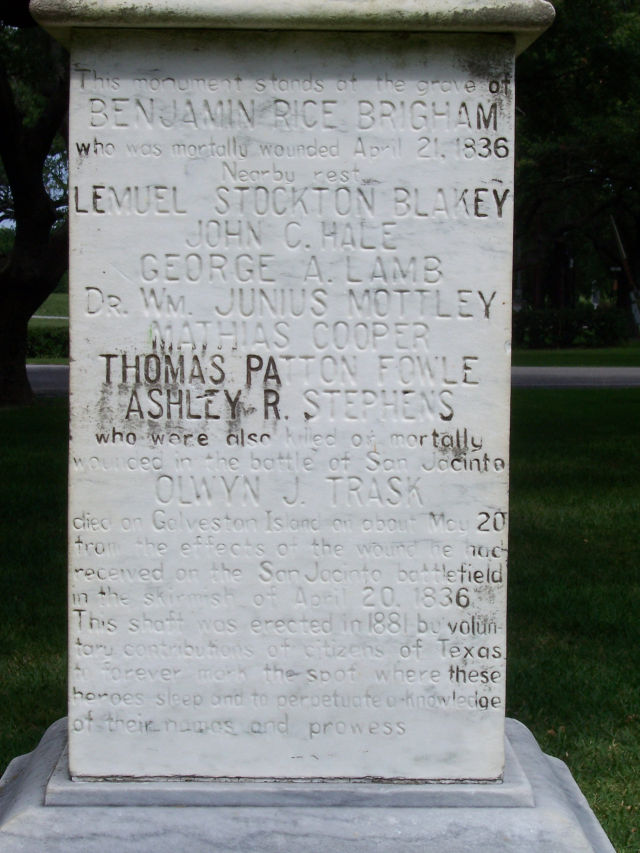 |
Note; the following is a small sample of our 304 Trask Civil War Veterans - e-mail me for additional information.
Massachusetts Volunteer Infantry, "27th Regiment"
"The 27th Regt. Mass. Vol. Inf. was raised in the western counties of Massachusetts by Horace C. Lee of Springfield, who became its colonel. The companies reported at Camp Reed, Springfield, between the 19th and 24th of September, and three quarters of the regiment had been mustered in by September 27. On November 2 the regiment entrained for Annapolis, Md., where it arrived on the 5th. January 9, 1862, as a part of Foster's Brigade, Burnside's Coast Division, it embarked with the Burnside expedition to North Carolina. It was engaged with loss at Roanoke Island, Feb. 8, and with greater loss at Newbern, March 14.
- Company B - Name Rank Residence Occupation Age Trask, George E. Priv. Erving Farmer 18 Trask, James H. Priv. Erving Mechanic 26
"Grand Army of the Republic" (6150 Civil War Veterans)
The following two solders,were on an alphabetical list which was published in
the "South Dakota Historical Collections",
Volume XVI, Part 1 (1932), pages 182 - 446.
Name Town Page Trask, L.H. BLUNT 209 (my great-grand father) * Trask, S. MADISON 338 (Lorenzo Harrison's brother) * Trask, S.; b. Canada, 1846; private, Co. F 46 Ia.; May to September, 1864. * from Madison, Lake Co., SD - G. A. R., South Dakota Historical Collections, vol. 16, Part 1 Keene, NH - Company F Trask, Daniel W. age 19 enl. 10-23-1861 wounded 3 times at Fair Oaks, Fredericksburg and Chancellorsville disch. 6-28-1865 Trask, William H. age 43, enl. 12-18-1863 captd. 4-7-1865 Farmville, VA exchanged disch. 6-2-1865 Washington, D.C. Illinois Civil War Veterans NAME COMPANY & UNIT RESIDENCE TRASK, AMASA F 71 INF AURORA TRASK, CHARLES A E 23 INF TRASK, CHARLES A I 60 INF MINOOKA TRASK, DARIUS L I 104 INF GROVELAND TRASK, EBEN G HQ 4 CAV GREENVILLE TRASK, GEORGE, Capt. F 81 INF CARBONDALE Disch. Mar 24, 1864, disabled TRASK, GEORGE W A 97 INF WOODBURN TRASK, GEORGE W B 5 REGT VOL CHICAGO TRASK, IRA WAYLAND K 8 CAVOTTAWA (see picture below) TRASK, JULIUS D 11 INF WINNEBAGO CO TRASK, JULIUS J B 7 CAV TRASK, LUTHER M H 124 INF TRASK, MATTHEW D 11 INF WINNEBAGO CO TRASK, WARREN D 12 CAV CHICAGO TRASK, WARREN D 12 CAV CON TRASK, WARREN H 74 INF HOWARD
Michigan Veterans of the Civil War Burial Sites Name Unit Cemetery Name City Trask, George H. 4th Cavalry, Company G Hyslop Sanilac Co., Mi Trask, Henry P. 5th Infantry, Company H Crystal Springs Benton Harbor, Mi Trask, John M. 27th Infantry, Company I Ihaca Ithaca, Mi Trask, Lafayette, L. 16th Infantry, Company H Silverbrook Niles, Mi Trask, Warren 2nd Cavalry, Company E Unkown Jeffersonville, In Trask, William H. 6th Infantry, Company H Maple Hill Charlotte, Mi
Vermont in the Civil War Trask, Edward D., Hartford, 1st U. S. Sharpshooters Vermont Volunteers Trask, Joseph E., Royalton, 2nd U. S. Sharpshooters Vermont Volunteers Pri Co E Trask, Converse T., Shrewsbury, Ninth Regiment Infantry Company B Trask, Horace [Pictures], Warren, Thirteenth Infantry Regiment Vermont Volunteers Pri Co B Trask, William H., Warren, Thirteenth Infantry Regiment Vermont Volunteers Pri Co B (son of Horace) Trask, George J., Warren, Thirteenth Infantry Regiment Vermont Volunteers Pri Co B (son of Horace) Lt. Trask, Frank A., Warren, Sixth Infantry Regiment Vermont Volunteers Co G Trask, Martin, Braintree, Pvt, Twelfth Infantry Regiment Vermont Volunteers Co F Trask, Martin, Randolph, Pvt, First Cavalry Regiment Company M
Israel A. Trask
Enlisted 15 April 1861 Priv. 24y Union Army at Lynn, MA D Co. 8th Inf. Reg. MA Mustered Out at Boston, MA on 01 August 1861
USS Brooklyn screw sloop, commissioned January 26, 1859
Nathaniel Trask, landsman; enlisted September 1, 1864 @ 26y; Portland, ME; ;previous, USS Ohio; born Maine; blue eyes, red hair, florid complexion
USS Hartford flagship of Admiral David Glasgow Farragut
William Trask, ordinary seaman, enlisted September 24, 1863 @ 23y, Boston, MA, previous USS Ohio, born Lynn, MA, blue eyes, black hair, fair complexion
 Return
Return
Michigan in the Civil War 1861 - 1865 © 1995, Don Harvey
6th Michigan Infantry, Company "H" which includes William S. Trask
They mustered into service in Kalamazoo in August 1861. Their motto is "Do Your Duty".
Read "Among the cotton thieves", by Edward Bacon.
Officer of the Federal Army and staff Warrenton, Va. in October of 1863 . |
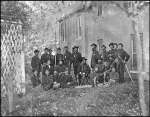 Click on the picture for a larger image |
Standing: 1. Lt. Ira Wayland Trask, 8th Ill. Cav. 2. Lt. George W. Yates, 4th Mich. Inf. 3. Lt. James F. Wade, 6th U.S. Cav. 4. Lt. Henry Baker, 5th U.S. Cav. 5. Lt. Leicester Walker, 5th U.S. Cav. 6. Capt. Charles C. Suydam, A.A.G. 7. Lt. Daniel W. Littlefield, 7th Mich. Cav. 8. Unknown. 9. Lt. Curwen B. McLellan, 6th U.S. Cav. 10. Unknown. 11. Lt. G. Irvine Whitehead, 6th Pa. Cav. Seated: 1. Lt. Col. Albert S. Austin, Chief Commissary. 2. Col. George A. H. Blake, 1st U.S. Cav. 3. Maj. Gen. Pleasonton. 4. Lt. Col. Charles R. Smith, 6th Pa. Cav., Chief of Staff. 5. Capt. Henry B. Hays, 6th U.S. Cav., Ordnance Officer. On ground: 1. Lt. Woodbury M. Taylor, 8th Ill. Cav. 2. Capt. Enos B. Parsons, 8th N.Y. Cav. 3. Capt. Frederick C. Newhall, 6th Pa. Cav. 4. Lt. Clifford Thomson, 1st N.Y. Cav. 5. Surgeon S. L. Pancoast, U.S.V. 6. Lt. B. T. Hutchins, 6th U.S. Cav.
Civil War photographs, 1861-1865 / compiled by Hirst D. Milhollen and Donald H. Mugridge, Washington, D.C. : Library of Congress, 1977. No. 0966
Civil War Pictures at The U.S. Army Military History Institute
MHI Photograph Database
U.S. Army Military History Institute
ATTN: Special Collections
22 Ashburn Drive
Carlisle, PA 17013-5008 •or call them directly at +1-717-245-3434
In the message, provide your postal address and the catalog number of the photograph you desire (the "RG" number).
RG98S-CWP57.84
An outdoor photo of seven enlisted men from Co. D, 8th Regt., Mass. Vol. Written on the front of the photo is "Our Crowd at Relay House, Md. Boys of our tent." Eight names are given, but only seven men are pictured. The names are: Pvt. George A. Foxcroft; Pvt. Egbert Oswell Hixon; Pvt. Josiah L. Elder; Pvt. Joseph A. P. Whitney; Pvt. Israel A. Trask; Pvt. J. Henry Williams; Pvt. Charles O. Atkinson. They are posing in front of a tent, some are smoking, others are holding weapons. Infantry, June, 1861
RG98S-CWP91.25
A bust view of Asst. Surg. Charles M. Trask, 5th Regt., N.H. Vol. Inf.
[6-5. Charles Mithchell Trask, b: 4-24-1837 Brookfield, VT or 11-30-1836]
RG98S-CWP 175.6
Sitting image of Pvt. James Retire Trask, Co. B, 21st Regt., Ohio Vol. Infantry. (This picture is flaking.) He is wearing a milita style shako.
note; Private James Retire Trask enlisted on 26 August 1861 at the age of 27 [b: ~1834]. He served with Co. D, 21st Ohio and was wounded on 25 March 1865 in South Carolina. He was mustered out with the company on 25 July 1865.
[5-3. James R. Trask, b: ~1835 OH (male 14y)]
RG98S-CWP 175.7
Bust image of Pvt. Nathaniel Trask, Co. B, 21st Regt., Ohio Vol. Infantry. He is pictured in uniform wearing a milita style shako. KIA: Battle of Chickamauga, 20 Sept. 1863.
note; Private Nathaniel Trask enlisted on 26 August 1861 at the age of 34 [b: ~1827]. He served with Co. D, 21st Ohio and was killed in action on 20 September 1863 during the battle of Chickamauga, GA. Private Trask was shot in the head and killed instantly but was most noted for his unusual antics just prior to being shot. He kept leaving the line during battle, complaining all the while to his commander that he had been shot in the head and that he was a dead man, thought there was no wound on him at the time. Later many were shocked to see his body with a bullet hole in the exact place that he had been complaining of just prior to receiving the wound.
[5-1 Nathaniel Trask, b: ~1827 Geauga (now Lake) Co., OH]
RG98S-CWP 170.2
Full standing view of Sgt. Whipple Olney Trask, Co. F & G, 12th Regt., Conn. Vol. Inf. He is in uniform.
[7-2. Whipple Olney Trask, b: ~1839 RI]
RG98S-CWP 164.49
A view of a headstone that has a small photo of Pvt. Matthew Trask, Co. D, 11th Regt., Ill. Vol. Inf.
[7-3. Matthew Trask, b: 9-22-1841 Durand, Winnebago County, IL]
They will mail a photocopy of the photograph to you for your examination and approval, along with much more detailed instructions, which will include charges for the duplication of photos. Assuming that you want a copy of the photograph(s), you will then mail a check for the appropriate amount payable to "MHI Fund" and the copy will be furnished after a suitable number of weeks for processing.
 Return
Return
First Arkansas Union Infantry Trask, Edmon Confederate Soldiers of Louisiana, Volume 2,3 T page 863 Trask, E.,Pvt. Co. I, 3rd La. Cav. Roll of Prisoners of War, C. S. A., Paroled Gainesville, Ala., May 12, 1865. Res. Amite Co., Miss. Trask, Jas.,Pvt. Grivot Grds. Federal Rolls of Prisoners of War, Captured and paroled Labadieville, La., Oct. 27, 1862. Trask, W. E.,Pvt. New Co. G, 4th La. Inf. En. Camp Moore, La., May 25, 186-. Roll dated May 25, 1861, dated April 20, 1862 Trask, Benjamin H. Ninth Virginia Infantry Genealogical Publications from the Library of Congress TITLE: 9th Virginia Infantry / EDITION: 1st ed. AUTHOR(S): Trask , Benjamin H. (Main) PUBLISHED: Lynchburg, Va. : H.E. Howard, c1984. DESCRIPTION: 106 p. : ill. ; 24 cm. NOTES: Bibliography: p. 103-106. SUBJECTS: Confederate States of AmericaCREW OF USS BENTON of Vicksburg, MS
TRASK, Joseph: Landsman, Ord Seaman: 15 Mar 1864, 15 May 1864
Kansas State Historical Society
This is a wonderful site, very organized and full of Trask Family information. [Josiah .C., T.P., R.D., E.R., Orville, Edward, Harry A. and D.B. Trask] Click on "Search" and type in "Trask" - Enjoy. The next article is from their website. There is much more - search for yourself.
The Lawrence Massacre has been made available by the Kansas Collection of Kenneth Spencer Research Library and the Department of History of the University of Kansas. The electronic copy was prepared by Mr. Alec Miller, Lawrence, Kansas 30 June 1994.
by a band of Missouri ruffians under Quantrell on August 21, 1863 150 men were killed eighty woman made widows and 250 children made orphans Price Ten Cents J. S. Broughton Publisher Lawrence, Kansas |
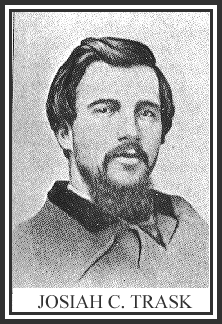 |
JOSIAH C. TRASK was one of the 180 victims of the terrible Quantrill raid and massacre at Lawrence, on August 21, 1863. He was a young and brilliant editor at the time of his death and few men of Kansas were more beloved. His father was a minister, who preached in Massachusetts for many years, and he himself was born at Warren, that state, May 9, 1837. He pursued an academic course at Fitchburg, and when sixteen years of age went to Boston, where he was employed as a printer in various newspaper offices. Through his father-in-law, Joel B. Hibbard, one of the founders of Cortland (New York) Academy, Mr. Trask imbibed strong anti-slavery convictions, and in February, 1857, in company with his brother, left New York for the Territory of Kansas. He first secured employment in the office of the Herald of Freedom, Lawrence, and in 1861, with Hovey E. Lowman, bought the paper and changed its name to the Kansas State Journal. Soon afterward he edited a paper at Topeka and published one at Yankton, Dakota. In the fall of 1862 he returned to New York, married and settled at Lawrence. In the following year, besides editing the Journal, he went as a delegate to the canal convention held in Chicago, and in the following July spent the Fourth, with his young bride, at Junction City. Arrangements had been completed for adding a daily issue to the Journal and the press arrived only a few days before his death. For several years he had done a large portion of the printing of the laws of Kansas, was able and popular, and of fine personal presence. On the morning of the massacre a band of Quantrill's men appeared at his boarding house and demanded the surrender of the inmates, under the promise of honorable treatment as prisoners. Mr. Trask was the first to appear and when all the inmates had followed they were shot in their tracks. Two of the number were instantly killed, including the lamented editor of the State Journal.
Spanish-American War Roster - 3rd US Volunteer Cavalry
This roster appears in Chapter LXXVII of "History of South Dakota" by Doane Robinson, Vol. I (1904), pages 455-462 and was scanned, OCRed and edited by Maurice Krueger, mkrueger@iw.net
Private Wilbur C. Trask; originally mustered in as private Troop E; promoted to regimental saddler sergeant, per general orders No. 5, May 31, 1898.
National Cemetery, Fort Bayard, Grant County, NM
Trask, Samuel M., Cpl. Spanish American War Veteran
4th Tennessee Volunteer Infantry, Co. L (4/5/1877-7/3/1953)
U.S., Spanish American War Volunteers Ten-week war was fought in both the Caribbean and the Pacific. Enlisted men 306,760, battle deaths 385
Private Albert L Trask of Rhode Island, Rhode Island Light Artillery Co. B
Corporal Arthur E Trask of Oregon, 2 Oregon Infantry Co. L
Sergeant Asa B Trask of Massachusetts, 6 Massachusetts Infantry Co. M
Private Clifton R Trask of Rhode Island, Rhode Island Light Artillery Co. B
Private Frank E Trask of Georgia, 2 Georgia Infantry Co. K
Private Harry A Trask of Massachusetts, 1 Massachusetts Heavy Artillery Co. L
Private Ralph I Trask of Maine, 1 Maine Infantry Co. D
Private Richard G Trask of Washington, 1 Washington Infantry
Sergeant Robert M Trask of Massachusetts, 6 Massachusetts Infantry Co. M
Corporal Samuel M Trask of Tennessee, 4 Tennessee Infantry Co. L
Private Simon E Trask of Indiana, 158 Indiana Infantry Co. M
Private Walter L Trask of Georgia, 1 Georgia Infantry Co. L
S Sergeant Wilbur C Trask, 3 United States Volunteer Cavalry Co. E
USS Amberjack - SS-219 (additional information)
was lost on 16-Feb-1943 with all 72 officers and men, including Paul B. Trask, TM2, when it was sunk off Rabaul.
Last Contact at 5°05'S 152°37'E.
"Shipmates on Eternal Patrol".
 Return
Return
The 200th Coast Artillery Anti-aircraft Regiment based in New Mexico - Thank you Rick and Kathi Trask
“On December 8, 1941, when the Japanese unexpectedly attacked the Philippine Islands, the first point bombed was Fort Stotsenberg. The 200th Coast Artillery, assigned to defend the Fort, was the first unit, under The General of the Army Douglas MacArthur, to go into action defending our flag in the Pacific. First to fire, and last to lay down their arms! A fitting epitaph for a valiant Brigade which fought standing firmly in its appointed place and facing forward to the enemy.”
December 1945, General Jonathan M. Wainwright
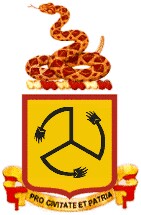 200th |
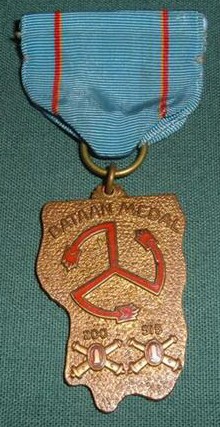 |
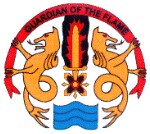 |
History - The former 1st Regiment of Infantry was reconstituted 16 July 1919 in the New Mexico National Guard as a separate squadron of cavalry and organized with Troops A and B at Albuquerque and Carlsbad, respectively. It was expanded, reorganized and redesignated 3 December 1920 as the 1st Cavalry. It was redesignated 2 May 1922 as the 111th Cavalry. Headquarters federally recognized 4 May 1924 at Santa Fe. Assigned 5 November 1923 to the 23rd Cavalry division. Relieved 15 March 1929 from assignment to the 23rd Cavalry Division. The 111th Cavalry was renamed the 207th Coast Artillery (Anti-aircraft) in 1939, but New York protested, wanting to keep their famed World War I unit number. The unit was converted and redesignated 26 April 1940 as the 200th Coast Artillery Regiment.
For eight months the Regiment underwent hard and rigorous training at Fort Bliss, Texas. Not only did these former “horse soldiers” have to learn new skills and techniques, but they had to absorb into their units hundreds of untrained Selective Service inductees. At one time the Regiment numbered over 2300.
On 17 August 1941, the Regiment was notified that it had been selected for an overseas assignment in the Philippines, on the island of Luzon, to provide air defense at Fort Stotsenberg for Clark Field. The 1st battalion departed Fort Bliss about 20 August and left San Francisco aboard the SS President Pierce on 29 August, arriving on 16 September. The 2nd battalion and Regimental HQ departed Fort Bliss on 31 August, left San Francisco aboard the SS President Coolidge on 9 September and arrived on 20 September 1941. The entire Regiment moved toward Fort Stotsenberg seventy-five miles north of Manila. All units were in defensive positions by 28 November 1941.
The defense of the Philippines was the responsibility of Major General Douglas MacArthur, retired Army Chief of Staff, recalled to active duty and assigned by 26 July 1941 to mobilize the Philippine Army and strengthen the U.S. garrison in the Philippine Islands.
During the weeks of settling in at Fort Stotsenberg, the 200th was able to unpack its equipment, get set in position, and had even planned for some target practice; however, no target ammunition could be obtained. As a consequence, the first shots fired by the 200th were aimed at enemy aircraft. They fought the war without ever having had any firing practice. However, an authenticated record of 86 planes downed during a four month period is proof that live target practice can be made into profitable training.
At 1235 hours, 8 December, Manila time (eight hours after Pearl Harbor was attacked), Japanese bombers, flying at 23,000 feet and accompanied by strafing planes, made their appearance and the war was on. New Mexico’s 200th Coast Artillery was the “first to fire” on the enemy. However they could not, with powder train fuses effective only to about 20,000 feet, do much damage to the high altitude bombers. The men dished out what ever they could and stood up well under these unfavorable and unequal conditions. When the smoke from the muzzles cleared away, five enemy planes had been shot down and two men of the outfit had lost their lives. That night, in order to provide anti-aircraft protection for Manila, the Regiment was split, forming the 515th Coast Artillery, the first battle-born unit of World War II.
In a few weeks, the Japanese had achieved aerial and naval supremacy in the Philippines, isolating MacArthur's force from Australia to the south and from Hawaii and the United States to the east. On Christmas Eve 1941, more of Homma's forces landed to the southeast of Manila at Lamon Bay and began their advance toward the capital, preparing to crush the American-Philippine forces in a pincer maneuver, on the verge of total victory.
By 23 December 1941, General MacArthur clearly understood the impending disaster. He notified all force commanders that night "Philippine Department Plan Orange" (developed in 1939) was in effect. The plan was to withdraw all of the forces to the Bataan Peninsula, a tongue of land in southwest Luzon forming the northwestern boundary of Manila Bay, as a delaying action until reinforcements could be sent. On Christmas Day MacArthur's headquarters was transferred to the tiny fortified island of Corregidor, south of Bataan in Manila Bay. Maj. Gen. Jonathan M. Wainwright remained on Luzon, commanding the ground force. Manila was declared an open city on 26 December to spare its destruction, but the Japanese bombed and shelled it anyway. New Year's Day the Japanese occupied Manila.
The last of the troops had made their way into Bataan on 6 January 1942, their fate was already sealed: with approximately 26,000 civilian refugees joining 80,000 troops, there was simply not enough food to go around. The parent 200th assumed the mission of covering the retreat of the Northern Luzon Force into Bataan while the newly formed 515th assumed a similar mission for the South Luzon Force. Fire from the Regiment defense held back Japanese air attempts to destroy the bridges. As a result, the North and South Luzon Forces found a clear passage into Bataan. Thus the 200th and the 515th completed their tasks of bringing the divisions safely to the peninsula.
On 15 January 1942, General MacArthur told his men that "Help is on the way from the United States...thousands of troops and hundreds of planes are being dispatched." Later, he told his men on Bataan "our supplies are ample," encouraging them to hold out until help arrived "any day now." And they fought on, against desperate odds - Read the copy of his typed statement.
Since 6 January the Japanese had suffered 7,000 battle casualties, with another 10-12,000 men dying of disease. The unexpected tenacity of the American opposition forced Homma to call for reinforcements. For the Americans, the failure of the supposedly invincible Japanese to crack their defenses lifted morale despite the dismal strategic situation.
On Jan. 3, 1942, Manuel Quezon, 63, the first President of the Philippines issued an executive order that $500,000 be transferred from the Philippine treasury in New York City to MacArthur's personal account; $140,000 was transferred to the accounts of three of MacArthur's chief aides. Quezon said this money was paid "in recognition of outstanding service" from 1935 to 1941, when MacArthur served as Field Marshal of the Philippine armed forces. On Feb. 19, MacArthur was notified that the funds had been transferred. The very next day Quezon was put aboard a U.S. submarine and taken to safety. President Quezon died in the U.S. in 1944.
On the Bataan Peninsula, while the enemy air actions were sporadic in nature, the menace of malaria and dysentery was everywhere. Food became scarce and the combination of hunger and fever reduced the units on Bataan to a state of apathy. The American and Philippine troops held out for four months against an overwhelming Japanese Army. Recognizing the steady deterioration of the American position, President Roosevelt ordered MacArthur to move his headquarters to Australia, over MacArthur's objections. On 12 March, the commander, his family, and his staff departed Corregidor on three PT boats, then transferred to B-17s at Del Monte airfield on Mindanao. Wainwright was left in command. As the word about MacArthur's secret departure spread, the troups felt betrayed and doomed. On 1 April 1942 General MacArthur recieved The Medal of Honor. By the end of March, commander's estimates of troop combat efficiency dropped to 20-25 percent. Bataan was surrendered at dawn on April 9, 1942 by Major General Edward P. King, Jr. Numbering more than 70,000 (Filipinos and Americans), it was the largest American army in history to surrender.
The last message from Wainwright on Corregidor was received late on 6 May 1942:
"... with broken heart and with head bowed in sadness, but not in shame, I report... that today I must arrange terms for the surrender of the fortified islands of Manila Bay, Corregidor, Fort Hughes, Fort Drum, and..."Except for the few who escaped to fight as guerrillas, the survivors of those bloody battles were to suffer three and one half more years of the most inhumane treatment known to mankind while being held by the Japanese as prisoners of war. "Of the eighteen hundred men in the Regiment, less than nine hundred made it back home and within one year a third of them died from various complications."
Richard Allen Trask Sr. resided in Bernalillo, NM, born 1919 Missouri. He enlisted into the 200th Coast Artillery Corps on 6 January 1941 at Albuquerque, NM. Sergeant Trask went to Manila as part of the 515th Coast Artillery. His unit held up the Japanese from taking over the Bataan Peninsula by defending roads and bridges for four months. He survived the horrors and atrocities of the 65 mile “Death March” from Mariveles to San Fernando. He also survived a voyage on a "hell ship" to the Omori Prison Camp. Omori (POW Camp Omori-ku Iriarai Kila) was located half way between Tokyo and Yokohama. It was set up on an artificial island in Tokyo bay, connected to the Tokyo-Yokohama road by a 200 meter long wooden bridge, surrounded by the sea on all sides. The oval shaped island was about 75 meters long and 65 meters wide. Around the island was a tall bamboo fence with barbed wire attached to it. The prisoners' barracks were in the middle of the island. He considered himself lucky to be at a working camp. While there he was a stevedore loading and unloading box cars. They believed all the freight for the whole damn country came through Tokyo in a "straw sack". Richard stated they could see the constant bombing around Tokyo.
Sergeant Trask was Liberated from the Tokyo POW Hospital - Shinagawa Yokohama 35-139 on 27 Sep 1945.
His previous report date was 7 May 1942 Coast Artillery Corps, Southwest Pacific Theatre: Philippine Islands.
Richard A. Trask POW 1942
Bataan-Corregidor Memorial Foundation of New Mexico
{RWT Note: I spent two years coming and going from Clark AFB. I went to most of all the places mentioned. It was not until I compiled the information about Richard that the impact of what Really happened in the Philippines hit me - like a ton of bricks. My intent here is to portray my Cousin Richard’s participation and survival. I strongly suggest to all to do a little more research and you will be as SHOCKED as I am about what REALLY happened in the Philippines. . We are all fortunate that there are thousands of Internet pages/images and several books dedicated to our service men and women that served and perished in the Philippines. I thank them all for their service, sacrifice and dedication of providing all of us with all of the facts - we must never forget.
The Bataan Death March - WikipediaThe Bataan Death March took place in the Philippines in 1942 and was later accounted as a Japanese war crime. The 60 mi (97 km) march occurred after the three-month Battle of Bataan, part of the Battle of the Philippines (1941–42), during World War II.
The "march", or forcible transfer of 75,000 American and Filipino prisoners of war, was characterized by wide-ranging physical abuse and murder, and resulted in very high fatalities inflicted upon prisoners and civilians alike by the armed forces of the Empire of Japan. Beheading, throat-cutting, and shooting were common causes of death, in addition to death by bayonet, rape, disembowelment, rifle-butt beating, and deliberate starvation or dehydration on the week-long continual march in the tropical heat. Falling down or inability to continue moving was tantamount to a death sentence, as was any degree of protest. Route of the death march from San Fernando to Capas was by rail.
The treatment of the American prisoners was characterized by its dehumanization, as the Imperial soldiery "felt they were dealing with subhumans and animals." Prisoners were attacked for assisting someone falling due to weakness, or for no reason whatsoever. Trucks were known to drive over those who fell or succumbed to fatigue, and "cleanup crews" put to death those too weak to continue. Marchers were harassed with random bayonet stabs and beatings. Accounts of being forcibly marched for five to six days with no food and a single sip of water are in postwar archives including filmed reports.
The exact death count is impossible to determine, but some historians have placed the minimum death toll between 6,000 and 11,000 men; other postwar Allied reports have tabulated that only 54,000 of the 72,000 prisoners reached their destination — taken together, the figures document a rate of death from one in four up to two in seven of those on the death march. The number of deaths that took place in the internment camps from the delayed effects of the march is considerably more.
Once the war had ended, details of the last hideous days in the Philippines began to see the light of day. For three weeks the commission heard ghastly details of slaughter and rape, of beheadings and burnings alive, of torture and wanton destruction, of the murders of the helpless–women and babies and priests and American prisoners of war. An Allied commission convicted General Tomoyuki Yamashita. He was hanged in Manila on 23 February 1946. General Masaharu Homma was convicted of war crimes, including the atrocities of the death march out of Bataan, and the following atrocities at Camp O'Donnell and Cabanatuan. The general, who had been absorbed in his efforts to capture Corregidor after the fall of Bataan, claimed in his defense that he remained ignorant of the high death toll of the death march until two months after the event. He was executed on April 3, 1946 outside Manila. Forty-four (44) Japanese were convicted of war crimes.
Korean Conflict Death Index
Eugene O. Trask, age 32, Trumbull, OH
Nelson E. Trask, age 31, Orange, VT
The VietNam Casualty Search Page
Lewis Arthur Trask
Las Vegas, NV
Born: Wednesday, May 28, 1947, Married
Army, Regular, PFC, MOS 67A10
Friday, October 6, 1967, Crashed on land (Crew member - Helicopter) Binh Duong, South Vietnam
The Wall: Panel 27E - Row 062
Return
George C. Trask 1896 - 1983 <
Published on December 31, 1983 - Associated Press and Detroit Free Press
George C. Trask, one of the few survivors of a British camel corps commanded by the legendary Lawrence of Arabia, has died at age 87. Mr. Trask was a member of Britain's Imperial Camel Corps during World War I and rode into battle with the renowned military strategist T.E. Lawrence. Services will be today in St. Barnabas Episcopal Church on Bainbridge Island, a church Mr. Trask helped found. He died last Sunday of a heart attack in his Bainbridge Island home.
Mr. Trask was born and reared in Beccles, England, near London. At 17 he joined the camel corps and rode with the First Suffolk Regiment. At the time of his death, Mr. Trask was one of about a dozen surviving members of the camel unit, said Laurel Slaninka of West Seattle, his daughter, who attended several reunions with him in London. "He wanted to get away from home and go where the action was but he found out it was no picnic at all," said Trask's son, Russell, also of Bainbridge Island. "He said it was one of the biggest mistakes of his life. He had to live in the desert on hard tack and bully beef," Russell Trask said. "What he thought were raisins in the hard tack he was eating turned out to be weevils." Trask said his father recalled "burying dead camels in the sand. It was quite a chore." Slaninka said her father had only "a vague knowledge" of Lawrence, who, as a colonel in the British government, helped organize the Arab revolt against Turkey. Lawrence became passionately devoted to the Arab cause and his military and diplomatic skills led to the defeat of the Turks and the entry of the Arabs into Damascus, the capital of Syria. After World War I, Mr. Trask traveled to North America and worked his way west across Canada, finally settling in Seattle, where he married Johanna Wegner. He was head of Seafirst Bank's printing department for 40 years, retiring in 1967.
from "The Debt of Honour Register" at http://yard.ccta.gov.uk/cwgc/register.nsf/The Commonwealth War Graves Commission is responsible for commemoration of those who died in the two world wars while serving with the forces of the now Commonwealth countries. This commemoration is achieved through marking and maintaining graves for those who are buried, or memorials for those who have no known burial. In addition to providing this Internet access to records of burials/commemorations, assistance is available for more difficult traces, reports on all casualties by name, regiment, home town, date of death etc. For further information about these services please contact:
Commonwealth War Graves Commission 2 Marlow Road Maidenhead Berkshire SL6 7DX United Kingdom Telephone: +44 1628 634221 Fax: +44 1628 771208 Here are the results of your enquiry. There are 29 records which match your search criteria. TRASK, Barry Alfred, Civilian, died on 30th Sep 1940 TRASK, C., Gunner Royal Field Artillery, died on 18th Feb 1916 * TRASK, Clarence, Aircraftman 1st Class Royal Air Force Volunteer Reserve, died on 16th Jan 1942 TRASK, Cyril Randolph, Pilot Officer Royal Canadian Air Force, died on 5th Mar 1943 TRASK, Charles William Trevor, Second Lieutenant Somerset Light Infantry, died on 18th Aug 1918 * TRASK, Donald Roy, Sergeant Royal Air Force Volunteer Reserve, died on 15th Aug 1944 * TRASK, Frederick Thomas, Private Sherwood Foresters (Notts & Derby Regt.), died on 6th May 1941 * TRASK, G., Gunner Royal Garrison Artillery, died on 31st Oct 1918 TRASK, G. H., Private Welsh Regiment, died on 9th Mar 1916 TRASK, George Reginald, Lance Corporal Suffolk Regiment, died on 18th Dec 1943 * TRASK, Heber, Private Royal Newfoundland Regt, died on 25th Oct 1918 * TRASK, Henry Thomas, Gunner Royal Australian Artillery, died on 18th Jul 1941 TRASK, J., Private Somerset Light Infantry, died on 12th Jun 1916 TRASK, J. A., Private Sherwood Foresters (Notts & Derby Regt.), died on 29th Oct 1917 TRASK, John Hedley, Second Lieutenant Hampshire Regiment, died on 20th Nov 1917 TRASK, Joseph William, Private Australian Infantry, A.I.F, died on 3rd May 1917 * TRASK, Kennth John, Flying Officer Royal Australian Air Force, died on 11th Nov 1943 * TRASK, Marion Ellis, Warrant Officer Class II Royal Canadian Air Force, died on 14th May 1944 TRASK, Norman George, Joiner 4th Class Royal Navy, died on 12th Nov 1942 TRASK, Robert Geoffrey, Private Royal Artillery, died on 28th Oct 1945 TRASK, Richard Jesse, Private Machine Gun Corps, died on 5th May 1918 TRASK, Roscoe Vaughn, Private Royal Canadian Regiment, died on 16th Nov 1917 TRASK, Sydney Robert, Second Lieutenant Suffolk Regiment, died on 9th Aug 1916 TRASK, Thomas Arthur, Private Somerset Light Infantry, died on 16th Sep 1916 TRASK, Thomas Hector, Private Wellington Regiment, N.Z.E.F., died on 24th May 1920 TRASK, William, Company Serjeant Major Hampshire Regiment, died on 20th Jan 1918 * TRASK, Woodrow Arnold, Warrant Officer Class I Royal Canadian Air Force, died on 14th Jun 1943 TRASK, Walter Albert Henry, Lieutenant Royal Marines, died on 1st Jan 1943 TRASK, W. G., Sapper Royal Engineers, died on 12th Oct 1918 TRASH, E. T., Private Royal Fusiliers, died on 11th May 1917 TRASS, Roland Clifford, Private N.Z. Infantry, died on 1st Dec 1941
Airman Donald H. Trask killed in helicopter blast on The Carrier Wasp at sea
Ney York Times, August 19, 19592 Killed, 21 Injured In Helicopter Blast On Carrier At Sea Quonset Point, RI, Aug. 19 Two crewman on the aircraft carrier Wasp were killed and twenty-one were injured in an explosion and fire yesterday afternoon while the ship was on maneuvers in the Atlantic. The carrier docked at the Naval Air Station pier here this morning. The accident occurred at 3:52 P.M. yesterday while the ship was about 250 miles east of Norfolk, VA. A helicopter engine being tested on a hanger bay "overspeeded" and exploded, the Navy reported. The Navy identified the dead as Lieut. (j.g.) Jim Frank Hagan of Marianna, Fla., and Airman Apprentice Donald H. Trask of Keene, N.H. Explodes In Routine Test Lieutenant Hagan, a pilot, was testing the helicopter. Apprentice Trask was asphyxiated in an elevator pit while fighting the fire.
At a news conference here, Rear Admiral Robert J. Stroh, commander of Carrier Division 14, who uses the Wasp as his flagship, described the accident as follows: "A helicopter engine 'ran away' and exploded while it was being tested in a routine test by a qualified pilot." "The cause of the runaway is indeterminate at this time and will be investigated. Obviously there was some malfunction or maladjustment of the engine." "The 'helicopter was consumed', as well as two others. The pilot was killed instantly and one enlisted man died fighting the fire." Admiral Stroh said he had never heard of such a "runaway" engine under hangar deck testing conditions. Runaway engines, he noted, are not uncommon when aircraft are airborne and the governors malfunction. Admiral Stroh said that all but three of the injured were back on duty today. Of the twenty-one injured crewman, only one required hospitalization. He is Sidney A. Chaplain of Philadelphia, who suffered a fractured of the left leg and burns.
The exploding helicopter and three others had to be jettisoned. Three others were extensively damaged. Navy officials said the heavy damage resulted in part from the sea water that poured on the flames from overhead sprinklers and fire hoses. Magneseum, a principal component of helicopters, burns fiercely under water. As soon as the fire was observed by the task force accompanying the Wasp, four destroyers rushed to her aid --- the McCaffrey, the Lloyd Thomas, the Harwood and the Keppler. Will Undergo Repairs Two closed alongside and poured water into the hanger bay. The two others took positions astern of the carrier to aid in possible rescue operations. Admiral Stroh said the Wasp would remain here for twenty-four to thirty-six hours before being assigned to a shipyard for repairs. The Wasp, a 35,200 ton vessel, carries a crew of 2,300. Her home port is Boston. Admiral Stroh praised the Wasp's crew for confining the fire to Hanger Bay One, the forward compartment of three bays on the hanger deck, below the flight line. "Had the fire progresses beyond Bay One, we would have been in very serious trouble." He said.
Air Rescue Service - so that others may Live. At 0605, on 21 January 1991, US Navy Lieutenants Devon Jones and Larry Slade bailed out of their F-14 Tomcat, 30 miles from Baghdad, after it was struck by an Iraqi missile. Enemy forces captured Lieutenant Slade, but Lieutenant Jones managed to evade the enemy. US Air Force Captain Thomas Trask and his crew, after searching in their MH-53J Pave Low helicopter, approached the area where Lieutenant Jones was hiding. At the same time, two A-10A Thunderbolt II ground attack jets destroyed an approaching Iraqi vehicle while Captain Trask pressed the rescue. Captain Trask landed his helicopter 150 yards from the smoldering truck, picked up Lieutenant Jones, and then delivered him safely to Saudi Arabia, completing the first successful combat search and rescue mission of the Gulf War.
Following the war, this rescue was designated the most meritorious flight of any US Air Force aircraft in 1991, and earned Captain Trask the Mackay Trophy from the US Air Force Chief of Staff.
Biography, from The Official Website of the United States Air Force.
Brigadier General Thomas J. Trask

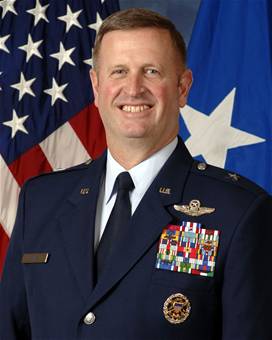

 rwtrask@rcn.com
rwtrask@rcn.com